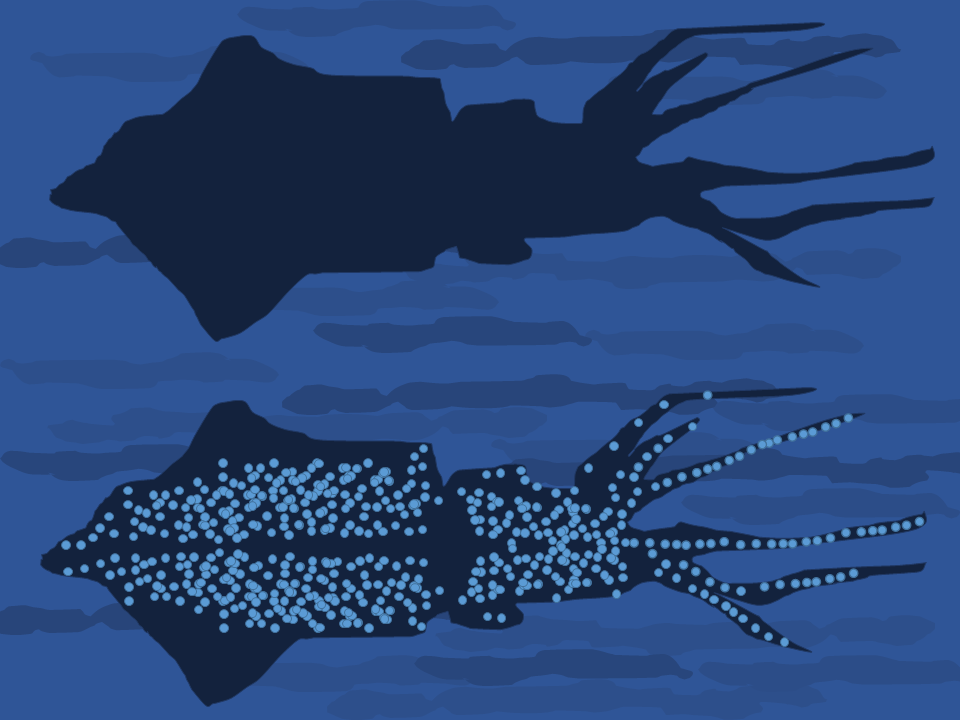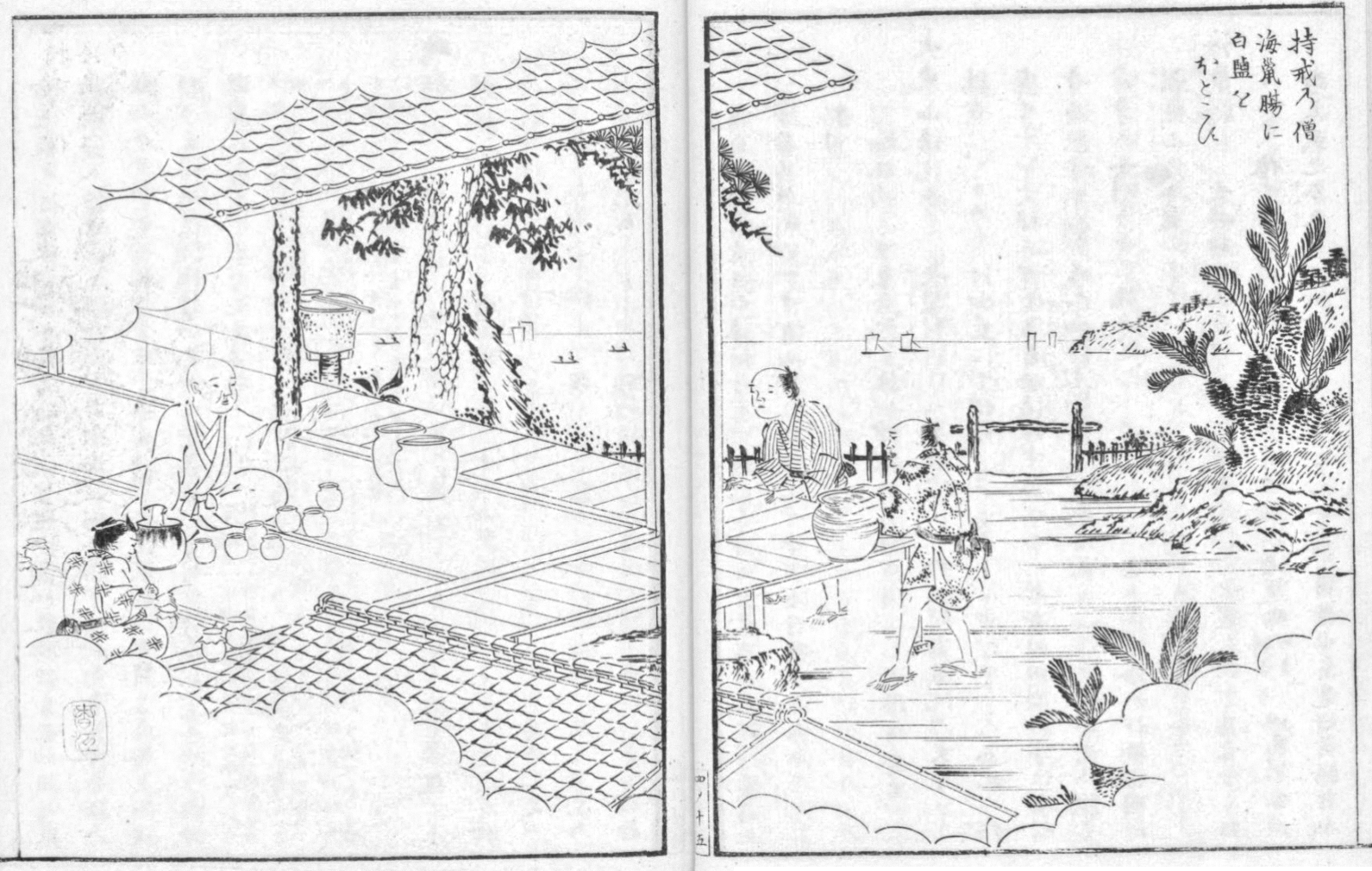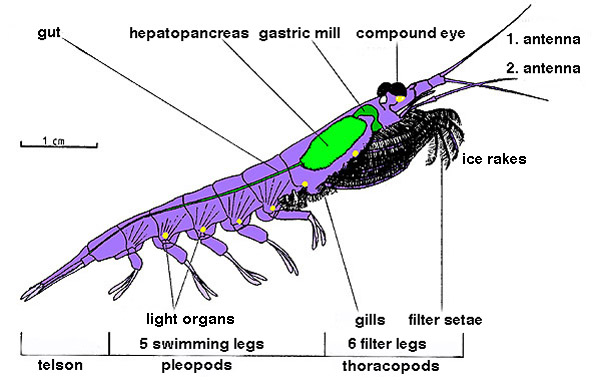|
Shiokara
, is a food in Japanese cuisine made from various marine animals that consists of small pieces of meat in a brown viscous paste of the animal's heavily salted, fermented viscera. The raw viscera are mixed with about 10% salt, 30% malted rice, packed in a closed container, and fermented for up to a month. ''Shiokara'' is sold in glass or plastic containers. The flavor is similar in saltiness and fishiness to that of European cured anchovies, but with a different texture. One of the best-known ''chinmi'' ("delicacy"), it is quite strong and is considered something of an acquired taste even for the native Japanese palate. It was a valuable protein in post-war Japan because food was scarce and it did not require refrigeration. It continued to be eaten as a condiment for rice and in bars. One method of enjoying it is to consume the serving in one gulp and to follow it with a shot of straight whisky. Some bars in Japan specialize in ''shiokara''. Some types of ''shiokara'' * Ik ... [...More Info...] [...Related Items...] OR: [Wikipedia] [Google] [Baidu] |
Skipjack Tuna
The skipjack tuna (''Katsuwonus pelamis'') is a perciform fish in the tuna family, Scombridae, and is the only member of the genus ''Katsuwonus''. It is also known as katsuo, arctic bonito, mushmouth, oceanic bonito, striped tuna or victor fish. It grows up to in length. It is a Cosmopolitan distribution, cosmopolitan pelagic fish found in tropical and warm-temperate waters. It is a very important species for fisheries. It is also the namesake of the nuclear submarine USS Skipjack (SSN-585), USS ''Skipjack''. Description It is a streamlined, fast-swimming pelagic fish common in tropical waters throughout the world, where it inhabits surface waters in large Shoaling and schooling, shoals (up to 50,000 fish, often in combination with other Scombridae, scombridaes), feeding on fish, crustaceans, cephalopods, and Mollusk, mollusks. It is an important prey species for sharks and large pelagic fishes and is often used as live bait when fishing for marlin. It has no scales, except on ... [...More Info...] [...Related Items...] OR: [Wikipedia] [Google] [Baidu] |
Firefly Squid
The firefly squid (''Watasenia scintillans''), also commonly known as the sparkling enope squid or hotaru-ika in Japan, is a species of squid A squid (: squid) is a mollusc with an elongated soft body, large eyes, eight cephalopod limb, arms, and two tentacles in the orders Myopsida, Oegopsida, and Bathyteuthida (though many other molluscs within the broader Neocoleoidea are also ... in the family Enoploteuthidae. ''W. scintillans'' is the sole species in the monotypic genus ''Watasenia''. These tiny squid are found on the shores of Japan in Spring (season), springtime during Spawn (biology), spawning season, but spend most of their lives in deeper Water, waters between . They are bioluminescence, bioluminescent organisms and emit blue light from Photophore, photophores, which some scientists have hypothesized could be used for communication, camouflage, or attracting food, but it is still unclear in the scientific community exactly how this species uses their biolumines ... [...More Info...] [...Related Items...] OR: [Wikipedia] [Google] [Baidu] |
Konowata
''Konowata'' is a kind of ''shiokara'' (fermented salted seafood), made from Sea cucumber as food, sea cucumber intestines. It is one of Japan's ''Chinmi'' (rare taste). The Noto Peninsula, Ise Bay, and Mikawa Bay have long been known as production centers, but today it is manufactured in various regions, including the Seto Inland Sea. ''Ko'' is Japanese for sea cucumber, ''no'' indicates the genitive case, and ''wata'' means internal organs. Method of manufacture Sea cucumbers are used as the source of ''konowata''; ''Apostichopus japonicus'' is considered delicious.崔相、大島泰雄�ナマコにみられる「アオ」と「アカ」の形態および生態的差異について日本水産学会誌 1961年 27巻 2号 p.97-106, First, the sea cucumbers are left in a fish tank set up in the sea near the work site for about two days until some of the food residue and feces inside their intestinal tracts are excreted. Rip the ventral side near the mouth with a small knife a ... [...More Info...] [...Related Items...] OR: [Wikipedia] [Google] [Baidu] |
Sea Cucumber (food)
Sea cucumbers are marine animals of the class Holothuroidea. They can be used as food, in fresh or dried form, in various cuisines. In some cultural contexts the sea cucumber is thought to have medicinal value. The creature and the food product are commonly known as in French, from Portuguese (), in Catalan, (or ) in Indonesian, in Japanese, in Tagalog, in Hawaiian, ('sea aubergine') in Turkish and in Sicilian. In Malay, it is known as the .Alessandro Lovatelli, C. Conand, Food and Agriculture Organization of the United Nations. ''Advances in sea cucumber aquaculture and management'': ''Volume 463 of FAO fisheries technical paper'' United Nations Food & Agriculture Org., 2004. . 425 pages: 58 Most cultures in East and Southeast Asia regard sea cucumbers as a delicacy. Several dishes are made with sea cucumber, and in most dishes, it has a slippery texture. Common ingredients that go with sea cucumber dishes include winter melon, conpoy, '' kai-lan'', shiitake ... [...More Info...] [...Related Items...] OR: [Wikipedia] [Google] [Baidu] |
Shutō (seafood)
is a specialty ''shiokara'' of Odawara,_Kanagawa, Odawara, Kanagawa Prefecture, in Japan.New York Magazine -Vol. 22, No. 37 - Magazine 18 Sep 1989 - Page 62 "Fiercely fragrant shuto — bonito liver pickled in sake." Ingredients Shuto is made by salting rare parts of bonito (''katsuo''), fermenting it for more than six months, then chopping it up and sometimes adding a mixture of ''sake'' and ''mirin''. There is also a tuna (''maguro'') type that has a milder character. Etymology The Chinese characters of the dish (酒盗) means "sake thief" and is derived from the belief that it is a good side dish for ''sake''. Legend has it when eating Shuto (酒盗), your chopsticks will move so fast that you will want to ‘steal’ (盗) ‘sake’ (酒). History There are records that it has been eaten in Japan for about 300 years. It may also be made with various other fish such as salmon, sea bream, and saury. It is sometimes known as ‘Japanese anchovies’, wh ... [...More Info...] [...Related Items...] OR: [Wikipedia] [Google] [Baidu] |
Mefun
is a local delicacy from Hokkaidō, Japan. Originally an Ainu dish, it consists of the kidney of chum salmon The chum salmon (''Oncorhynchus keta''), also known as dog salmon or keta salmon, is a species of anadromous salmonid fish from the genus ''Oncorhynchus'' (Pacific salmon) native to the coastal rivers of the North Pacific and the Beringian Arctic ... pickled in a salt solution until a dark brownish black. It is often served with alcohol or as a side dish. References Japanese seafood Culture of Hokkaido Ainu cuisine Offal dishes {{Japan-cuisine-stub ... [...More Info...] [...Related Items...] OR: [Wikipedia] [Google] [Baidu] |
Fiddler Crab
The fiddler crab or calling crab can be one of the hundred species of semiterrestrial marine crabs in the family Ocypodidae. These crabs are well known for their extreme sexual dimorphism, where the male crabs have a major claw significantly larger than their minor claw, whilst females claws are both the same size. The name fiddler crab comes from the appearance of their small and large claw together, looking similar to a fiddle. A smaller number of ghost crab and mangrove crab species are also found in the family Ocypodidae. This entire group is composed of small crabs, the largest being ''Afruca tangeri'' which is slightly over two inches (5 cm) across. Fiddler crabs are found along sea beaches and brackish intertidal mud flats, lagoons, swamps, and various other types of brackish or salt-water wetlands. Whilst fiddler crabs are currently split into two subfamilies of Gelasiminae and Ucinae, there is still phylogenetic and taxonomical debate as to whether the movement ... [...More Info...] [...Related Items...] OR: [Wikipedia] [Google] [Baidu] |
:Category:Japanese Words And Phrases ...
{{Commons Words and phrases by language Words Words Words A word is a basic element of language that carries meaning, can be used on its own, and is uninterruptible. Despite the fact that language speakers often have an intuitive grasp of what a word is, there is no consensus among linguists on its ... [...More Info...] [...Related Items...] OR: [Wikipedia] [Google] [Baidu] |
Chum Salmon
The chum salmon (''Oncorhynchus keta''), also known as dog salmon or keta salmon, is a species of anadromous salmonid fish from the genus ''Oncorhynchus'' (Pacific salmon) native to the coastal rivers of the North Pacific and the Beringian Arctic, and is often marketed under the trade name silverbrite salmon in North America. The English name "chum salmon" comes from the Chinook Jargon term ''tsəm'', meaning "spotted" or "marked"; while ''keta'' in the scientific name comes from Russian language, Russian, which in turn comes from the Evenki language of Eastern Siberia. The term 'Dog Salmon' is most commonly used in Alaska and refers to the Salmon whose flesh Alaskans use to feed their dogs. In Japan, chum salmon is also known as the , or simply , while historically it was known in ''kun'yomi'' as up until the Meiji period. In Greater China, it is known academically as the "kype, hook-snout salmon" ( zh, 钩吻鲑), but is more often called the ''damaha'' fish (), which is loanw ... [...More Info...] [...Related Items...] OR: [Wikipedia] [Google] [Baidu] |
Krill
Krill ''(Euphausiids)'' (: krill) are small and exclusively marine crustaceans of the order (biology), order Euphausiacea, found in all of the world's oceans. The name "krill" comes from the Norwegian language, Norwegian word ', meaning "small Fry (biology), fry of fish", which is also often attributed to species of fish. Krill are considered an important trophic level connection near the bottom of the food chain. They feed on phytoplankton and, to a lesser extent, zooplankton, and are also the main source of food for many larger animals. In the Southern Ocean, one species, the Antarctic krill, makes up an estimated biomass (ecology), biomass of around 379 million tonnes, making it among the species with the largest total biomass. Over half of this biomass is eaten by whales, Pinniped, seals, penguins, seabirds, squid, and fish each year. Most krill species display large diel vertical migration, daily vertical migrations, providing food for predators near the surface at night an ... [...More Info...] [...Related Items...] OR: [Wikipedia] [Google] [Baidu] |
Dayok
Dayok is a Philippine condiment originating from the islands of Visayas and Mindanao in the Philippines. It is made from fish entrails (usually from yellowfin tuna), excluding the heart and the bile sac. It is fermented with salt, and sometimes rice wine (pangasi) and various herbs. It has a sharp umami Umami ( from ), or savoriness, is one of the five basic tastes. It is characteristic of broths and cooked meats. People taste umami through taste receptors that typically respond to glutamates and nucleotides, which are widely present in me ... and salty flavor very similar to patis (fish sauce), patis (fish sauce) and bagoong. They are sold in sealed glass bottles. See also *Bekasang, a similar Indonesian preparation *Shiokara, a similar Japanese preparation *Bagoong *Shrimp paste *Fish sauce References External links * Fermented fish Fish sauces Philippine condiments Fermented foods {{Philippines-cuisine-stub ... [...More Info...] [...Related Items...] OR: [Wikipedia] [Google] [Baidu] |







